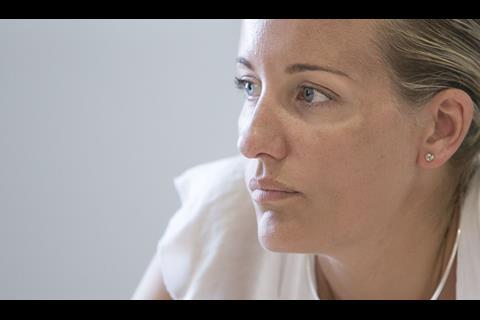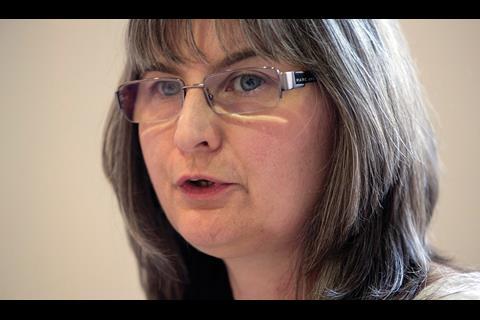HSJ’s latest roundtable agreed that the potential savings to be made in ostomy, continence and wound care in the new world of commissioning are huge - but that age old problems ranging from poor communication to organisational rivalry stand in the way of realising them. Claire Read reports
Roundtable participants
Chair: Dr Charles Alessi chair of the National Association of Primary Care and of NHS Clinical Commissioners, practising GP
Beryl Bevan assistant director for service delivery, Ealing CCG
Richard Cornwell business unit director, ostomy at ConvaTec
Paul Jerram head of medicines management, Isle of Wight CCG
Peter Johnstone prescribing commissioner, Liverpool CCG
Theresa Neale council member of the British Association of Urology Nurses and urology clinical nurse specialist, South Warwickshire Trust
Colette O’Brien Macmillan colorectal/upper GI and CUP clinical nurse specialist, Buckinghamshire Healthcare Trust
Rebecca Slater stoma nurse specialist for organisations including North West London Hospitals Trust
Alan Turrell head of contracting and procurement, Walsall CCG
When considering how ostomy, continence and wound care might be affected by the new commissioning environment, it seemed sensible to start with a look at the figures. Dr Charles Alessi - chair of this HSJ roundtable, which was run in association with ConvaTec - asked panellists to consider the scale of the issue.
He touched on the hundreds of thousands of patients prescribed products each year. He continued with a look at the money involved. The sums are far from insignificant. It is estimated that the total annual cost of caring for patients for chronic wounds, for instance, is £2.3bn to £3.1bn.
But, he suggested, “estimated” is the operative word. There is little real understanding of how much it truly costs to provide care to patients with wounds, a stoma or compromised continence. The sense is that there is significant variation. The further sense is that the move to a new method of commissioning might provide an opportunity to do something about it.
Determining need
The first question Dr Alessi posed to panel members was therefore quite what clinical commissioning groups should be doing to determine the actual need and current spend in ostomy, continence and wound care. There was a clear agreement on the answer: it will be necessary to consult with experts in these areas, and those experts are unlikely to be CCG employees.
“When it comes to new commissioners looking at this, I think one of the difficulties is the lack of expertise of commissioners in these areas,” argued Alan Turrell, head of contracting and procurement at Walsall CCG.
‘The risk is that as a CCG we get in to too much of telling somebody how to do things’
Peter Johnstone, prescribing commissioner at Liverpool CCG, agreed. “The risk is that as a CCG we get in to too much of telling somebody how to do things,” he suggested.
“We’re not the experts, we don’t have the expertise in the room at all, and so you go out to the experts and say how can you provide this?”
So if CCGs do not possess the expertise to make decisions and assessments in these areas of provision, who does? Commissioning support units? Not at present, panellists suggested. “I don’t think CSUs are in a situation at the moment to be able to go down to that kind of detail,” said Beryl Bevan, assistant director for service delivery at Ealing CCG. “At the moment they’re really coping with the bigger picture.”
Who has the expertise?
What about GPs? Certainly they might be the usual answer when looking for experts on services such as these, which straddle primary, secondary and tertiary care.
The problem, panel members suggested, is that ostomy, continence and wound care are specialist areas. That means GPs are not necessarily best placed to provide the answers either.
“Who is the expert? With these and many other areas - nutrition, for example - it’s not the GP,” argued Paul Jerram, head of medicines management at Isle of Wight CCG.
‘GPs cannot know in enough detail, or have enough depth of knowledge, to make any real decisions about this’
“If we take stoma care, it’s a very specialist area,” pointed out Richard Cornwell, business unit director, ostomy, at ConvaTec. “There are only about 120,000 patients in the country with a stoma, so that’s probably about two or three patients for every GP. So GPs frankly cannot know in enough detail, or have enough depth of knowledge, to make any real decisions about this.”
Ms Bevan said her experience was that the same applied to wound care. “We’ve moved all wound dressing products from GP prescription to the community services,” she reported.
“Pharmacists are not experts in these areas, GPs are not experts in these areas, so what we needed to do was to go out to the experts and work with them to find out how best to manage the situation.”
Community specialists
Rebecca Slater, a stoma nurse specialist for organisations including North West London Hospitals Trust, agreed. “When you’re looking at chronic wound management, or even patients who have complex stoma issues and requirements, I think it’s a valid point that it needs to go back to the community setting with the nurses who are actually dealing with the patients and have the experience.”
‘80 per cent of patients who see a specialist stoma nurse have a better quality of life as a consequence’
When it comes to stoma, those specialist nurses in the community are increasingly based with the companies manufacturing ostomy products. There is little doubt that such specialists make a difference: Mr Cornwell spoke of audit data which shows that more than 80 per cent of patients who see a specialist stoma nurse have a better quality of life as a consequence. But the appropriateness of this sort of private sector involvement has long been discussed, and it was a topic to which panel members turned their attention.
While Colette O’Brien - Macmillan colorectal/upper gastrointestinal and cancer of unknown primary clinical nurse specialist at Buckinghamshire Healthcare Trust - said that having a company nurse in the community had helped, but she was concerned by the number of companies involved. She also expressed worries that such nurses were company led in their prescribing.
Stronger relationships
Mr Turrell, meanwhile, suggested there was a need to ensure companies did not wield disproportionate power. “I don’t think the concept of the companies sponsoring nurses will necessarily go away,” he said. “But I think certainly as commissioners we’d feel a lot more comfortable with some degree of independence.”
‘If the patient’s quality of life is high, then one product over another frankly doesn’t matter’
Assuming potential conflicts of interest such as these are managed, however, most panel members saw the benefits of building stronger relationships with the private sector in ostomy, continence and wound care. Mr Johnstone declared himself “fairly relaxed about using company nurses if you commission it properly - if you specify your outcomes and have some kind of measure. If the patient’s got the right product for them and their quality of life is high, then one product over another frankly doesn’t matter”.
It was a view echoed by Mr Jerram. “I’m unashamedly happy to work with industry,” he reported. “At the moment, there is an issue around whether it is appropriate to work with industry. But one thing I would like to do more of is work with industry to the benefit of the patient.”
In good company
The clinicians on the panel reported that working with company nurses can lead to just such benefits. “If you look at stoma care, community nurses based with a company can prevent patients just going on ordering more things if they’re having problems,” Ms Slater reported.
“If there’s a problem, if they’re leaking, the nurse looks at the appliance and changes it appropriately rather than just keep on repeating a prescription for something that’s not working.
“Company based nurses are also able to cover larger areas than acute nurses visiting out in the community,” she continued. “And that’s often not possible now [in any case] due to the inpatient workload that we have.”
Theresa Neale, council member of the British Association of Urology Nurses and urology clinical nurse specialist at South Warwickshire Trust, said there could be similar benefits in her area of practice.
‘If nurses can find an alternative product that works better for the patient… that reduces the need for overuse’
“We have a company nurse within the community and she looks at all the products suitable for that patient. In many respects, when you look at the community and the trusts, we don’t have those supplies to hand, we don’t always have that to access. Which is why we use this company nurse because she’s got all the products.”
“Since there is not a wealth of knowledge about these areas within the NHS, it is sometimes incumbent on the company nurse to make decisions,” reported Mr Cornwell. “But without those decisions being made, the patients are making their own choices and are adding accessory products to prescriptions and costing the NHS a lot of money that is currently not transparent and not controlled.
“If nurses can find an alternative product that works better for the patient, that reduces the need for accessories and reduces the need for overuse, so the NHS is winning from a cost perspective - from a QIPP perspective.”
Bridging the gap
Whether a community nurse is company or NHS based may be an area of controversy, but it was suggested that in some ways focusing on it misses the real issue. Dr Alessi gave the panellists the task of examining the current problems in ostomy, continence and wound care services. What two things might they change to improve such services, he asked. Revealingly, most of those on the panel responded with just one: communication.
‘You need to bridge the community with the acute so that we’re not having an overlapping of surplus products’
“A community based expert, whether company or NHS, is ultimately going to provide the same ethical care for the patient,” argued Ms Slater. “There are benefits to having expert nurses in the acute trust and expert nurses in the community, as long as the communication gap is bridged. You need to bridge the community with the acute so that we’re not having an overlapping of surplus products.”
It was a point echoed by Ms Neale when asked what she would want to change. “Communication between acute trusts and the community, and handover of patient care,” she said. “It’s one of the biggest problems we have – whose responsibility is that patient? Particularly if it’s someone who has been admitted via A&E and had a catheter put in and then discharged out in to the community – who’s responsible for taking that catheter out?
“We really need an increased awareness from both the trust and the community perspective on when those catheters do need to come out, because I think that would be a very big cost saving on antibiotics and on products.”
Forging communication
Ms O’Brien put it simply: “There should be closer links with staff in hospitals,” she said.
It was a point with which Mr Cornwell wholeheartedly agreed. “We need to improve the communication between the acute trust and primary care and community,” he said. “The patient starts in acute, they have a stoma formed or some kind of urological intervention, and then they can sometimes get lost to the community.
“We need to change the communication networks, change the relationships. Have a stronger link there. So rather than having a group of nurses here, and a group of nurses there, and never the twain shall meet, there needs to be some kind of contractual arrangement between the two to forge communication.”
‘We need to educate patients appropriately so they are responsible but safe. Waste is then reduced’
Ms Bevan suggested education could be important here. She spoke of the importance of primary and secondary care staff understanding one another’s different roles and responsibilities. “To get them together I think would help.”
She also suggested patient education was of critical importance: ensuring that as well as conversations about patient choice, there are conversations about patient responsibility for ostomy, continence and wound care.
Ms Slater agreed. “If we want patients to be more involved in their care, and managing their own care, then we need to educate them appropriately so they are responsible but safe. Waste is then reduced.”
Understanding choice
“Patients need choice but I don’t think they realise how much things cost,” reported Ms O’Brien. “I get patients who don’t want to waste and if they think a product is just as good but cheaper, they will go for that. So maybe more understanding from patients as to how much products cost [would be helpful].”
Mr Turrell agreed that patient choice was important. But he warned that this should not be at the cost of commissioners developing an overall picture of ostomy, continence and wound care provision.
“A big question is where the focus is,” he argued. “There’s probably not focus on the services, the overall service and the overall pathways for these services. There’s probably focus instead on the products and the spend on the products.
‘The actual services are lost in the commissioning of general district nursing services’
“At Walsall, for example, we have done pharmaceutical reviews of prescribing but I can’t go to anybody in my CCG and say: who’s the commissioner of [ostomy, continence and wound care] services? The actual services are lost in the commissioning of general district nursing services. We haven’t identified specific pathways, and that’s an issue.
“We’ve come across stories of patients having the same product for 20 years,” he continued, “and not being known by stoma services at all. And that takes us down the line of looking at these pathways. As commissioners, we should not be just looking at the products that are on those pathways, but the services that go with them – the service available in the community to all of our population, not just focused on individuals.
“These areas are lost to some extent already within CCGs in that there hasn’t been that focus on them. I think the key thing is having an understanding of the now, what are we spending our money on, how is it commissioned, who’s providing the service - it’s very fragmented.”
Focus on pathways
Such a focus on pathways would lend itself to new approaches well suited to the new healthcare landscape, he suggested. “[You could] maybe look at the specific services, supply a product and all the bits that go with it in a single pathway. So we’re looking to a lot more integrated care. In commissioning that, various models could be used. Some of these areas potentially could lead themselves to an any qualified provider route. Where you have several companies but the companies don’t just supply the product, they are also required to provide the support services that go with that as well.”
Mr Johnstone suggested approaches to budgets also had a part to play in driving this vision of integrated continence, ostomy and wound care services. “Service line budgets were bandied about a lot two or three years ago,” he said, “so this is a stoma budget, or this is a dressings budget, and everyone who needs it dips in to it. Whether that’s in primary care, secondary care, or potentially providers outside in industry doesn’t to me really matter. So this is your dressings budget for city of Liverpool - you’ve got shared outcomes, you’ve got shared goals, and you’ve got a shared budget.
“We had a big event recently in Liverpool where we got all provider trusts together and some people from the local authority – the question was how do we get through the minefield of the financial disaster of the next five to 10 years? And the message is about integration – it’s about the fact people fall through gaps as they move through the services as we fight over little pots of money and the power.”
Perverse incentives
It was a description that seemed to characterise the challenges in ostomy, continence and wound care services. Here, as in so many areas, the perverse incentives which stop organisations taking actions for the benefit of patients will need to be addressed. “We currently have this infighting - we’re constantly trying to get one over on our colleagues, whether it’s a deal within secondary or tertiary care that causes difficulties in primary care or vice versa,” said Mr Jerram.
“I just wish we could go back to one NHS, I wish we could somehow overcome this one-upmanship. We’re in this constant cycle. I wish we would focus on patients instead of on getting one over on colleagues.”
‘We have to get this right otherwise the whole system is going down within the next five years’
Mr Johnstone argued that there may soon be no choice. “We’re on a burning platform. We have to get this right, have to put aside some of those petty things, otherwise the whole system is going down within the next five years.”
“So thank God for burning platforms,” said Dr Alessi, concluding the debate. “Because that’s the only way we’re going to change the things we’re doing, sadly.”
This roundtable clearly implied that one area in which change is needed and would be valuable is ostomy, continence and wound care. The nature of the needed change? Quite simply: better communication.






























No comments yet